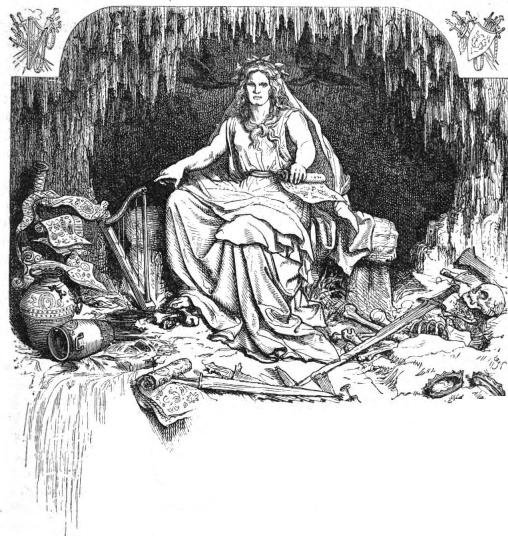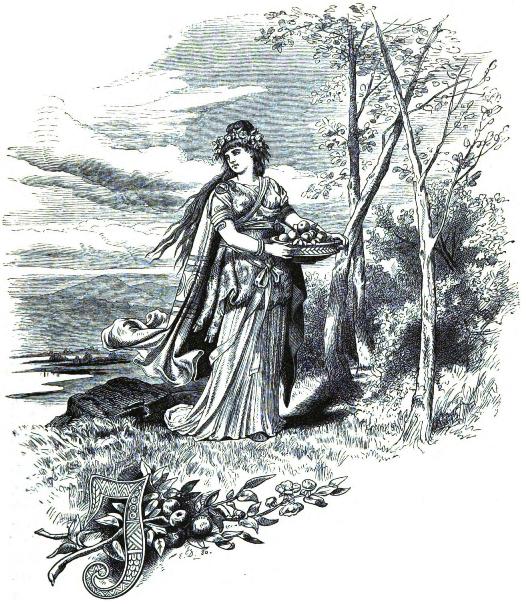
Odin Battling The Fenriswolf On Ragnarok, Painted By Emil Doepler (18551922) The Historian's Hut
Carl Emil Doepler 'The Elder' from Nordisch-Germanische Götter und Helden re-published in 1887 as Unzre Vorzeit by Wilhelm Wagner and Jakob Nover Illustrations varied between the two editions. The following illustrations were published in the first and/or second edition.

Prof. Karl Emil Doepler der Ältere, German (18241905), attr. Tiroler Bursche, Zampognaro
Carl Emil Doepler (1824-1905) was a German painter, illustrator and costume designer. He created the costumes for Richard Wagner 's opera Der Ring des Nibelungen at the Bayreuther Festspiele in 1876.

Emil Carl Doepler 'The Elder' Illustrations
Later on, in the 1870s, costume designer Carl Emil Doepler created horned helmets for the Viking characters of Richard Wagner's "Der Ring des Nibelungen" opera cycle. Alternatively, some experts believe that 19th-century artists could have been inspired by discoveries of ancient horned helmets later determined to predate the Vikings.

Carl Emil Doepler “Alberich”, 1876 Richard Wagner, Fantasy Characters, Zelda Characters
(Carl Emil Doepler) Mimir's Portrayal in Literature and the Arts. In art, Mimir is most frequently depicted as a head which looms over a well at the foot of Yggdrasil. Odin ensured Mimir's wisdom was never lost, and he protected the decapitated head of the god by embalming it and enchanting it, allowing Mimir to continue to live and speak.

Carl Emil Doepler (1824 1905)
About. Carl Emil Doepler (1824-1905) was a German painter, illustrator and costume designer. [1] He created the costumes for Richard Wagner's opera Der Ring des Nibelungen at the Bayreuther Festspiele in 1876. Carl Emil Doepler is a Artist on USEUM.

Carl Emil Doepler “Fafner”, 1876 Alter krieger, Nibelungen, Das rheingold
Two names worth mentioning here are Michael Echter and Carl Emil Doepler, both German painters working in close contact with Wagner. Michael Echter was commissioned by King Ludwig II to decorate his palace with murals inspired by The Ring, of which the king had grown very fond.

Carl Emil Doepler 1876 costume designs for the first Ring Cycle Flickr
Carl Emil Doepler (1824-1905) was a German painter, illustrator and costume designer. [1] He created the costumes for Richard Wagner 's opera Der Ring des Nibelungen at the Bayreuther Festspiele in 1876. [1]

Emil Carl Doepler 'The Elder' Illustrations
One originating source for the horned helmets has been pegged: they were used by Carl Emil Doepler, the costume designer for the premiere of Wagner's opera Ring of the Nibelung at the Bayreuth.

Emil Doepler's Illustrations of Germanic Mythology
Carl Emil Doepler 'The Younger' Illustrations from Walhall: Die Götterwelt der Germanen by Wilhelm Ranisch [POPULAR RETELLINGS] Additional Images Available at Boedicca's Bard Heimdall and the Heavenly Bridge : Ing or Scef : Odin and Frigg at Heaven's Window Frigg, Fulla and Gna : Freyja in her Car drawn by Cats.

Carl Emil Doepler Fronleichnamsprozession Stock Photo Alamy
Emil Doepler (29 October 1855, in Munich - 21 December 1922, in Berlin) was a German illustrator, graphic artist, and heraldist. He is usually referred to as The Younger, to distinguish him from his father. Life and work He was born to Carl Emil Doepler, an illustrator and designer, who was head of the costume department at the Bayreuth Festival.

Carl Emil Doepler “Gunther”, 1876 Richard Wagner, Vikings, Hans Richter, Best Armor, 4 Element
Costume designer Carl Emil Doepler, who included horned helmets in his gorgeous costume designs for the 1876 performance of Wagner's classic Norse saga, Der Ring des Nibelungen. The gorgeous.
_-_(MeisterDrucke-1410080).jpg)
Thor battling the Midgard Serpent at the battle of Ragnarok (colour litho)
The helmet, popularized by Carl Emil Doepler's original Ring Cycle costume designs, was part of a cultural mania, ongoing for a century at least, among Europeans to invent culture through art.

Carl Emil Doepler “Fricka and Freia”, 1876 Immagini, Dee, Figurativo
In 1876, costume designer Carl Emil Doepler sketched out designs for a performance of Richard Wagner's Der Ring des Nibelungen. Doepler gave Vikings' helmets horns and the rest is history. But why? Carl Emil Doepler/Pinterest Carl Emil Doepler gave the Vikings horned helmets, triggering a myth that lasts to this day.

Carl Emil Doepler "Knechte mit Jachtbeute”, 1876 Nibelungen, Der ring des nibelungen, Das
Their beards were neatly trimmed, and they were also known to wear eyeliner. All of this preening was said to make Vikings a rather attractive prospect to women in villages they raided, as other.

Carl Emil Doepler (german, 18241905) by PKFNF Forest landscape, Forest art
When Wagner staged his "Der Ring des Nibelungen" opera cycle in the 1870s, costume designer Carl Emil Doepler created horned helmets for the Viking characters, and an enduring stereotype was born.

Carl Emil Doepler “Gunther”, “Hagen”, 1876 Historical warriors, Classic art, Odin and thor
By the 1870s, horned Viking headgear was an integral part of the popular "Der Ring des Nibelungen" opera, thanks to Carl Emil Doepler's costume design [source: History]. These artists and designers didn't just make up the idea of horns on helmets, though. Many helmets predating the Vikings by at least a century were adorned with antlers, wings.